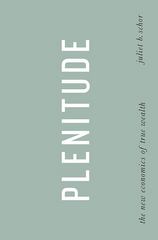please solve using Bayes' Rule
4. Consider the following simplified view of a jury weighing evidence (treat the jury as a single decision maker). A defendant in a court case is accused of committing a crime. Assume there is potentially one piece of relevant evidence, which is denoted by d. If the defendant is guilty, d is realized with probability pc = 1/8. If the defendant is innocent, d is realized with probability py = 1/2. Assume that the jury's prior probability that the defendant is innocent is }. That is, before observing anything pertaining to the evidence realization, the jury assigns a prior probability of : to the defendant being innocent. Assume that the jury forms an updated belief about the defendant's innocence/guilt using Bayes' rule. Assume that if d is realized, the defendant chooses whether to disclose it. Suppose that the jury chooses an action a e [0, 1] and has a payoff given by uj = -[a - 0]?, where 8 - 1 if the defendant is actually innocent and 0 - 0 if the defendant is actually guilty. One could view a as being inversely related to the amount of award that the defendant is required to pay or his level of culpability. Note that this payoff function implies that the jury wishes to match its action a to its posterior (or updated) belief that the defendant is innocent. Further, assume that the defendant's payoff is increasing in a so the defendant prefers that the jury have a higher posterior to a lower one. Assume that the defendant knows his own type (innocent or guilty) and observes whether d exists (is realized). If d exists, the defendant chooses whether to disclose it. The jury only observes whether d is disclosed - not whether the defendant is guilty 2 or innocent. When the defendant does not disclose d, we can say that the defendant disclosed (. Let b(d) denote the jury's posterior belief that the defendant is innocent when the defendant discloses d,. Analogously, let b(0) denote the jury's posterior belief that the defendant is innocent when the defendant discloses (. Finally, suppose that, when he possesses, each type of defendant randomizes as to whether to disclose d with probability 1/2. That is, when either type of defendant possesses d, he discloses it with probability 1/2. (a) Find b(d). (b) Can the described randomization by each type of defendant be part of a PBE? Explain. Simple intuition is fine







